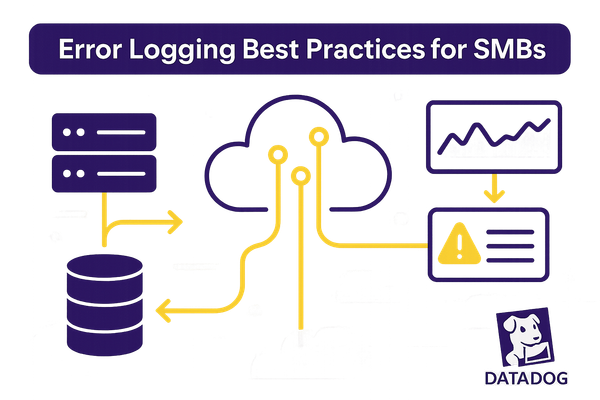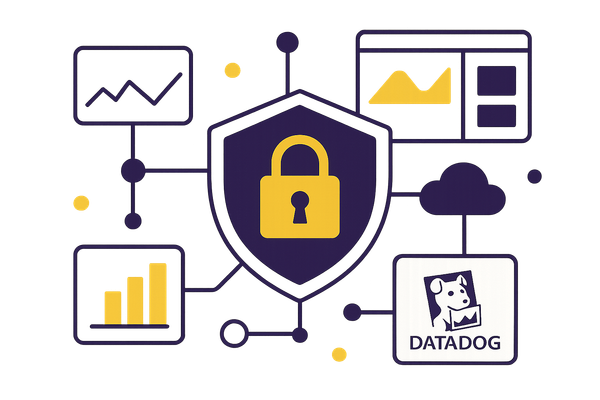ArgoCD Integration Changelog Overview
Explore the latest updates in ArgoCD's integration with Datadog, enhancing Kubernetes deployment monitoring and security for SMBs.
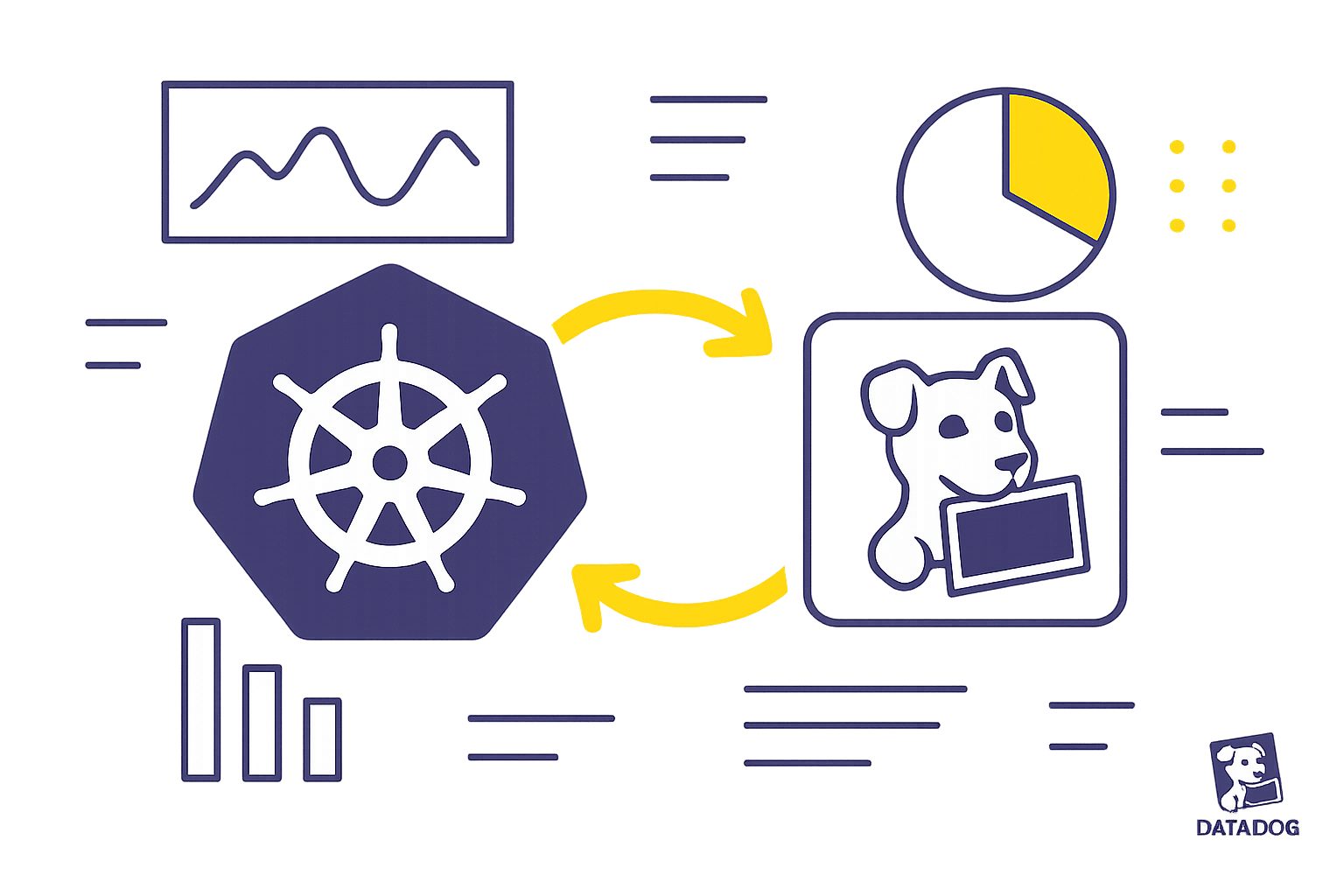
The ArgoCD integration with Datadog offers tools to monitor Kubernetes deployments by tracking metrics like application syncs, repository operations, and API performance. Recent updates include commit server metrics, Application Set metrics, and TLS cipher configuration for secure communication. Key releases in 2025 - Versions 3.4.0 and 3.3.0 - introduced these features, improving deployment visibility and security.
For small and mid-sized businesses (SMBs), regular updates, monitoring key metrics, and setting up prebuilt alerts help ensure smooth operations. A quarterly update schedule is recommended to maintain compatibility and avoid disruptions. Stay informed by reviewing changelogs and leveraging Datadog’s preconfigured dashboards to identify and resolve issues efficiently.
Managing Datadog monitors through Kubernetes configuration
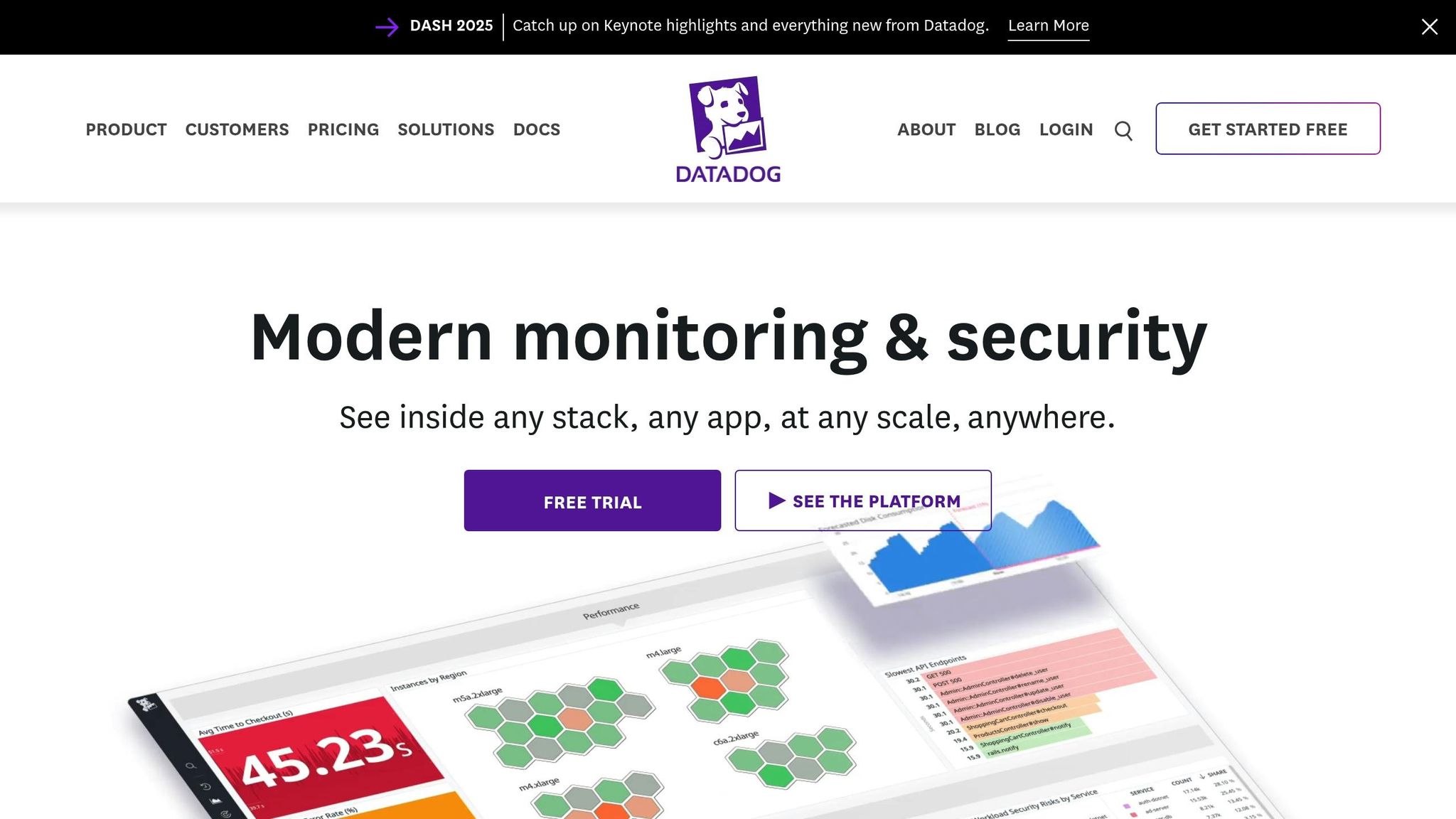
Recent Updates and Changes
ArgoCD's integration with Datadog has introduced updates designed to broaden monitoring capabilities and provide deeper insights into deployments. These improvements build upon the real-time insights already available, paving the way for a richer understanding of version history and release notes.
New Feature Additions
- Commit Server Metrics: Teams can now track source repository activity directly through commit server metrics. This addition sheds light on how ArgoCD interacts with repository data, offering a clearer picture of its operations.
- Application Set Metrics: Monitoring grouped applications has become more streamlined with new metrics that track health and sync status. These updates make it easier to evaluate batch deployments at a glance.
-
TLS Cipher Configuration: A new
tls_ciphersparameter allows administrators to configure TLS cipher suites, ensuring secure communication between Datadog and ArgoCD components.
These updates aim to simplify workflows while enhancing security and visibility across deployments.
Version History and Release Notes
In 2025, the ArgoCD integration introduced two major updates, each improving monitoring capabilities and offering new tools to streamline operations. These updates are particularly helpful for SMBs looking to schedule updates effectively. Here's a breakdown of the key changes:
Version 3.4.0, released on June 12, 2025, brought real-time commit activity tracking through commit server metrics.
Earlier in the year, Version 3.3.0, released on January 16, 2025, introduced the tls_ciphers parameter. This addition gave administrators more control over TLS cipher suite configurations, ensuring secure communication between Datadog and ArgoCD components.
| Version | Release Date | Agent Version | Key Changes |
|---|---|---|---|
| 3.4.0 | 06/12/2025 | Compatible with existing agents | Added commit server metrics collection |
| 3.3.0 | 01/16/2025 | 7.63.0 | Introduced tls_ciphers parameter |
When planning updates, compatibility is a key consideration. The integration supports multiple Datadog Agent versions, including 7.61.0, 7.59.0, 7.58.0, 7.57.0, 7.55.0, 7.53.0, 7.52.0, 7.51.0, 7.49.0, 7.48.0, 7.47.0, 7.46.0, and 7.42.0. However, users of ArgoCD versions between 2.9.6 and 2.11.0 should note a known issue: the Openmetrics integration may timeout after 10 seconds when the controller.sharding.algorithm parameter is set to "round-robin." To avoid disruptions, it's recommended to upgrade to version 2.11.0 or later, or modify the sharding configuration.
The update schedule reflects a consistent development pace, with new releases approximately every five months. This predictable cadence allows businesses to plan maintenance windows while staying up-to-date with new features and security enhancements.
Best Practices for SMBs Using ArgoCD Integration
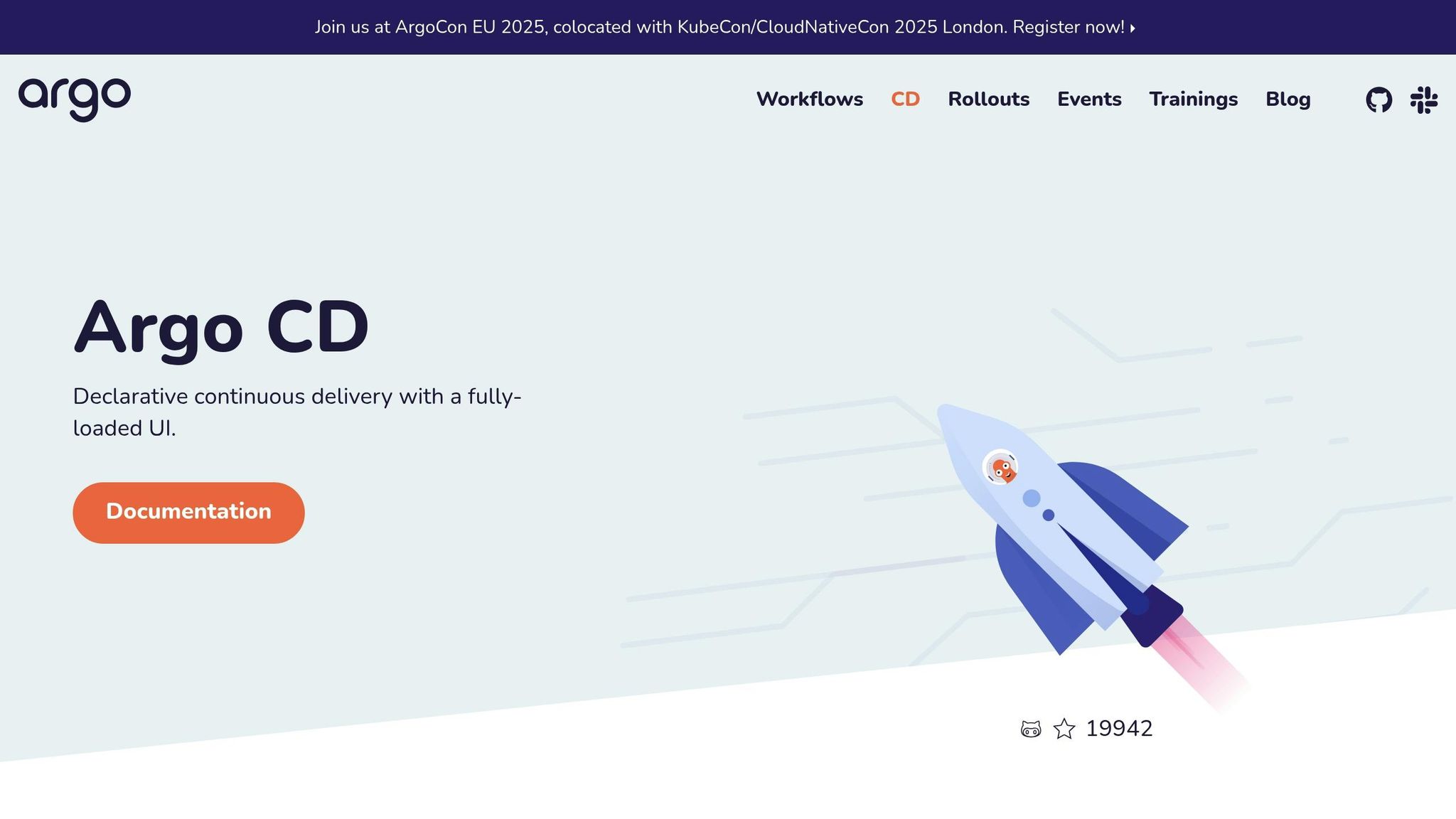
Small and medium-sized businesses (SMBs) can make the most of their ArgoCD integration with Datadog by focusing on monitoring key metrics, ensuring compatibility through regular updates, and leveraging automated alerts. These steps help streamline Kubernetes deployments while keeping operational challenges in check. By adopting these practices, businesses can take full advantage of recent integration features for smoother deployments.
Monitoring Key Metrics
ArgoCD provides several metrics that offer valuable insights into your Kubernetes deployment pipeline. These metrics are essential for tracking application syncs, API performance, and repository operations:
-
Application Sync Metrics:
- The
argocd.app_controller.app.sync.countmetric tracks the total number of application syncs, offering a clear view of deployment frequency and patterns. - The
argocd.app_controller.app.infometric highlights the number of applications out of sync, categorized by host and status, which is crucial for identifying and resolving issues.
- The
-
API Performance:
Theargocd.api_server.grpc.server.handled.countmetric measures the total number of requests handled by each service. Spikes in request volume or unusual patterns may signal performance bottlenecks or the need for scaling adjustments. -
Repository Operations:
Theargocd.repo_service.git.request.duration.seconds.bucketmetric helps monitor the performance of Git fetch requests. Slow operations here could point to network issues or large repository sizes, which might affect deployment speed.
Datadog’s built-in dashboard offers a centralized view of these metrics across ArgoCD components, including the repository server, application controller, and API server. This makes it easy to assess how well ArgoCD is managing deployments and syncs.
For instance, if a deployment error occurs, you can check the argocd.app_controller.app.info metric on the dashboard to see if multiple applications are out of sync. Logs can provide further details, such as error codes or timestamps, helping you pinpoint issues like YAML configuration errors or overloaded resources.
Consistent monitoring, paired with routine updates, ensures that your integration continues to perform effectively.
Managing Compatibility and Updates
Monitoring alone isn’t enough - keeping your system updated is equally important to maintain deployment reliability. A quarterly upgrade schedule works well for balancing security updates and operational stability.
Here’s how a quarterly update cycle can work: Begin upgrades during the last month of each quarter in smaller environments like development or staging. This allows teams to identify and resolve any issues early. Document findings in a shared repository, then roll out the updates to all clusters and applications during the final weeks of the quarter.
Fleet Automation simplifies this process by offering centralized management for agents at scale. By monitoring the sum:datadog.agent.running{*} metric, you can quickly spot drops in agent reporting, which might indicate compatibility issues or failed updates.
Staying informed about new updates is also crucial. Subscribing to RSS feeds from GitHub repositories for the agent, APM, and RUM ensures you can plan maintenance windows around predictable release cycles.
Setting Up Prebuilt Monitors
Prebuilt monitors make it easier to detect and respond to sync issues without the hassle of creating custom alerting rules. The ArgoCD integration includes a recommended monitor that filters the argocd.app_controller.app.info metric to flag unsuccessful syncs automatically.
These monitors check for sync failures every 30 minutes, but you can adjust thresholds based on your specific needs. Beyond the default checks, consider adding custom health validations to monitor critical services, endpoints, or business logic. This adds an extra layer of assurance beyond standard Kubernetes health probes.
To ensure quick responses to alerts, integrate these monitors with your existing notification systems, like email or Slack. Starting with the recommended monitor provides immediate coverage for common sync issues and sets the stage for more advanced monitoring as your use of ArgoCD grows.
Summary
Keeping up with ArgoCD integration changelogs is crucial for small and medium-sized businesses (SMBs) aiming to improve Kubernetes deployment efficiency and monitoring. Recent updates to the Datadog ArgoCD integration bring several improvements, such as better metric collection from commit servers, new Application Set metrics, and fixes for metric collection errors that impact deployment visibility.
These updates highlight the importance of regularly reviewing changelogs, which help teams stay informed about fixes and avoid monitoring gaps. For SMBs, these enhancements mean improved resource management, quicker detection of sync issues, and clearer insights into Kubernetes deployments. Key metrics like argocd.app_controller.app.sync.count and argocd.repo_service.git.request.duration.seconds.bucket - discussed in the Best Practices section - offer valuable data to anticipate and address potential bottlenecks.
FAQs
How do the new commit server metrics improve ArgoCD's integration with Datadog for monitoring Kubernetes deployments?
The latest commit server metrics take ArgoCD's integration with Datadog to the next level, offering a closer look at critical aspects like application health, sync status, and API activity. With these metrics, you can monitor your Kubernetes deployments more precisely and gain insights that help you manage them more effectively.
By providing detailed tracking of changes and system performance, these updates make it simpler to spot and resolve potential problems. The result? Smoother deployment workflows and a more reliable system overall.
What are the advantages of the TLS cipher configuration feature added in Version 3.3.0 for securing communication between Datadog and ArgoCD?
The TLS cipher configuration feature, introduced in Version 3.3.0, boosts security by letting you customize encryption protocols. This helps ensure strong, secure communication between Datadog and ArgoCD components while reducing vulnerabilities tied to outdated or weak ciphers.
With the ability to adjust cipher settings, you can align encryption protocols with your organization’s security policies and meet modern standards. This added flexibility gives you more control over your data's protection.
How can small and medium-sized businesses efficiently manage updates to the ArgoCD integration with Datadog?
To keep the ArgoCD integration with Datadog running smoothly, small and medium-sized businesses (SMBs) should focus on a few key practices:
- Check metric exposure: Make sure ArgoCD is set up to expose Prometheus-formatted metrics. Datadog relies on these for data collection, so adjust your settings if necessary to ensure everything aligns.
- Keep everything updated: Regularly review the integration changelog for updates to the Datadog Agent and ArgoCD components. Staying current helps maintain compatibility and access new features.
- Automate wherever possible: Tools like Helm charts or CI/CD pipelines can make deployment updates easier and reduce risks of manual errors.
- Monitor actively: Leverage Datadog dashboards to stay on top of deployment health. Keep an eye on metrics and logs to quickly spot and address any potential issues.
By sticking to these practices, SMBs can maintain a reliable, secure, and efficient integration between ArgoCD and Datadog.


